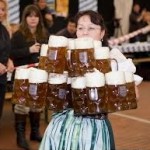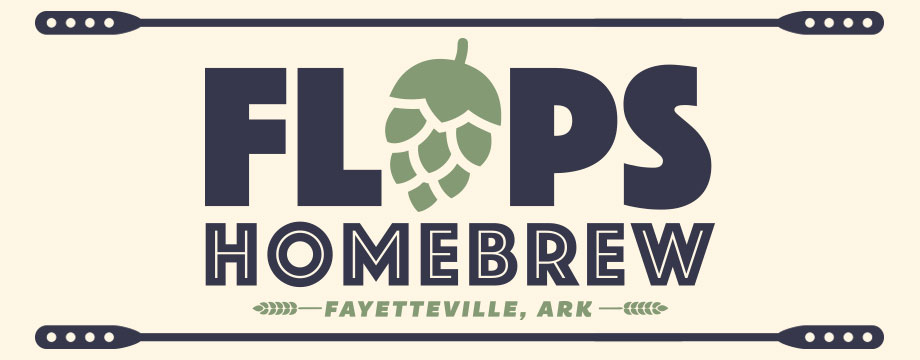 There are two malt forward, low hopped styles represented in Category 3:
There are two malt forward, low hopped styles represented in Category 3:
3A- Vienna Lager, and 3B- Oktoberfest.
Below is a great background and history of these styles as contained in Winning-Homebrew.com.
In addition, there is a great discussion of these styles, along with award winning recipes, on episodes of Jamil Zainascheff’s Brewing with Stye podcasts- Märzen/Oktoberfestbier, and Vienna Lager
————————————————————————————————–
European amber lagers have their origins in Austria, as do all lagers. Anton Dreher has been credited with isolating the first strain of yeast that fermented at a lower temperature and did most of their fermentation work on the bottom of the fermentation tank. He began brewing with this yeast exclusively in his family’s brewery around 1836. His beer eventually became the Vienna lager. Brewers around the world quickly adopted his yeast and the modern lager was born.
The two beer styles which fall in the European Amber Lagers category are similar in many ways. Both beers are malt-focused with low hop character. Both are clean refreshing lagers that can be very elegant. Oktoberfest is a little bigger beer with more maltiness a some malty sweetness up front.
Märzen/Oktoberfestbier History
You’ll find a couple of views as to why the Märzen/Oktoberfest style was not brewed in the summer months. One says it’s because of a Bavarian brewing ordinance that said beer could only be brewed between the days of Saint Michael (Michaelmas, or September 29) and Saint George (April 23). The reason being that there was an increased danger of fire during the hot summer months. The other says that brewers had a hard time brewing acceptable beer in the summer months because the beer would invariably become infected with air-borne bacteria which were much more prevalent during those months. At the time they had no idea what caused the beer to go sour, but by trial and error, found that beers brewed between the months of Oktober and March were almost always clean and tasted great. Both views may be correct, but the fact remains that beer wasn’t brewed during the summer months.
To have enough beer to sell during the summer, brewers would brew a huge supply of an extra strong well-hopped beer in March that could be stored (lagered) for a long time. The extra alcohol and abundant hops served to preserve the beer, along with the cold lagering temperatures in the ice caves. This beer became known for the month it was brewed in, Märzen (pronounced Maer-tsen). When the summer was over, and brewing could commence again, the brewers had to empty all the kegs of Märzen to make room for the new beer. So, like any of us would do when we had a huge supply of beer that needed to be drank quickly, they threw a big party and Oktoberfest was born. Eventually, the March beers turned into Oktober beers. The hops had mellowed out and the malt came forward. As a style, modern versions of Märzen, like Oktoberfestbier, are well aged, sometimes for as long as three or four months.
To be a true Oktoberfestbier, the beer must be brewed by breweries within the city limits of Munich. All others are called Oktoberfest-style beer. The term Oktoberfestbier is a little misleading. These beers are not actually brewed in the fall, they are an offshoot of the original Märzen beers.
Vienna Lager’s History
The Märzen-Oktoberfest style of European Amber Lagers eventually evolved with advancements in brewing knowledge. In 1841 Anton Dreher and Gabriel Sedlmayer, friends and owners of Dreher Brewery of Vienna and Spaten Brewery of Munich respectively, got together and decided to lighten the beers up. They used a new malt that was just slightly caramelized and very pale. We now call this malt Vienna malt. Sellmayer at Spaten Brewery continued to call the beer Märzen but added the slogan “brewed the Vienna way”. In Anton Dreher’s brewery the new beer was given a new name and style designation, Vienna Lager.
In 1871 Sedlmayer reformulated the Märzen “brewed the Vienna way” using a slightly darker malt than the Vienna malt. He introduced the beer at that year’s Oktoberfest in Munich. He marketed the beer under the name Oktoberfestbier, and the rest is history. The new malt is now called Munich malt.
You won’t find any Vienna lagers brewed in Vienna. They are mostly brewed here in North America. In the late 1800’s Austrian brewer Santiago Graf and others emigrated from Austria to Mexico and brought their favorite style of beer with them. The modern Vienna lagers brewed in Mexico aren’t exactly true to style because they are brewed with adjuncts (cheaper) which lighten the malt profile and sweeten the finish. There are many great Vienna lagers brewed in the US and they are worth trying.
BJCP Guidelines:
3. EUROPEAN AMBER LAGER
3A. Vienna Lager
Aroma: Moderately rich German malt aroma (of Vienna and/or Munich malt). A light toasted malt aroma may be present. Similar, though less intense than Oktoberfest. Clean lager character, with no fruity esters or diacetyl. Noble hop aroma may be low to none. Caramel aroma is inappropriate.
Appearance: Light reddish amber to copper color. Bright clarity. Large, off-white, persistent head.
Flavor: Soft, elegant malt complexity is in the forefront, with a firm enough hop bitterness to provide a balanced finish. Some toasted character from the use of Vienna malt. No roasted or caramel flavor. Fairly dry finish, with both malt and hop bitterness present in the aftertaste. Noble hop flavor may be low to none.
Mouthfeel: Medium-light to medium body, with a gentle creaminess. Moderate carbonation. Smooth. Moderately crisp finish. May have a bit of alcohol warming.
Overall Impression: Characterized by soft, elegant maltiness that dries out in the finish to avoid becoming sweet.
History: The original amber lager developed by Anton Dreher shortly after the isolation of lager yeast. Nearly extinct in its area of origin, the style continues in Mexico where it was brought by Santiago Graf and other Austrian immigrant brewers in the late 1800s. Regrettably, most modern examples use adjuncts which lessen the rich malt complexity characteristic of the best examples of this style. The style owes much of its character to the method of malting (Vienna malt). Lighter malt character overall than Oktoberfest, yet still decidedly balanced toward malt.
Comments: American versions can be a bit stronger, drier and more bitter, while European versions tend to be sweeter. Many Mexican amber and dark lagers used to be more authentic, but unfortunately are now more like sweet, adjunct-laden American Dark Lagers.
Ingredients: Vienna malt provides a lightly toasty and complex, melanoidin-rich malt profile. As with Oktoberfests, only the finest quality malt should be used, along with Continental hops (preferably noble varieties). Moderately hard, carbonate-rich water. Can use some caramel malts and/or darker malts to add color and sweetness, but caramel malts shouldn’t add significant aroma and flavor and dark malts shouldn’t provide any roasted character.
Vital Statistics:
OG: 1.046 – 1.052
IBUs: 18 – 30 FG: 1.010 – 1.014
SRM: 10 – 16 ABV: 4.5 – 5.5%
Commercial Examples: Great Lakes Eliot Ness (unusual in its 6.2% strength and 35 IBUs), Boulevard Bobs 47 Munich-Style Lager, Negra Modelo, Old Dominion Aviator Amber Lager, Gordon Biersch Vienna Lager, Capital Wisconsin Amber, Olde Saratoga Lager, Penn Pilsner
3B. Oktoberfest/Märzen
Aroma: Rich German malt aroma (of Vienna and/or Munich malt). A light to moderate toasted malt aroma is often present. Clean lager aroma with no fruity esters or diacetyl. No hop aroma. Caramel aroma is inappropriate.
Appearance: Dark gold to deep orange-red color. Bright clarity, with solid, off-white, foam stand.
Flavor: Initial malty sweetness, but finish is moderately dry. Distinctive and complex maltiness often includes a toasted aspect. Hop bitterness is moderate, and noble hop flavor is low to none. Balance is toward malt, though the finish is not sweet. Noticeable caramel or roasted flavors are inappropriate. Clean lager character with no diacetyl or fruity esters.
Mouthfeel: Medium body, with a creamy texture and medium carbonation. Smooth. Fully fermented, without a cloying finish.
Overall Impression: Smooth, clean, and rather rich, with a depth of malt character. This is one of the classic malty styles, with a maltiness that is often described as soft, complex, and elegant but never cloying.
History: Origin is credited to Gabriel Sedlmayr, based on an adaptation of the Vienna style developed by Anton Dreher around 1840, shortly after lager yeast was first isolated. Typically brewed in the spring, signaling the end of the traditional brewing season and stored in cold caves or cellars during the warm summer months. Served in autumn amidst traditional celebrations.
Comments: Domestic German versions tend to be golden, like a strong Pils-dominated Helles. Export German versions are typically orange-amber in color, and have a distinctive toasty malt character. German beer tax law limits the OG of the style at 14˚P since it is a vollbier, although American versions can be stronger. “Fest” type beers are special occasion beers that are usually stronger than their everyday counterparts.
Ingredients: Grist varies, although German Vienna malt is often the backbone of the grain bill, with some Munich malt, Pils malt, and possibly some crystal malt. All malt should derive from the finest quality two-row barley. Continental hops, especially noble varieties, are most authentic. Somewhat alkaline water (up to 300 PPM), with significant carbonate content is welcome. A decoction mash can help develop the rich malt profile.
Vital Statistics:
OG: 1.050 – 1.057
IBUs: 20 – 28 FG: 1.012 – 1.016
SRM: 7 – 14 ABV: 4.8 – 5.7%
Commercial Examples: Paulaner Oktoberfest, Ayinger Oktoberfest-Märzen, Hacker-Pschorr Original Oktoberfest, Hofbräu Oktoberfest, Victory Festbier, Great Lakes Oktoberfest, Spaten Oktoberfest, Capital Oktoberfest, Gordon Biersch Märzen, Goose Island Oktoberfest, Samuel Adams Oktoberfest (a bit unusual in its late hopping)


